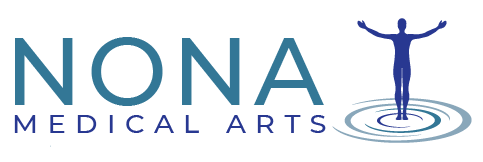Ketamine for Depression & Pain Management
 Ketamine Infusion can be used for chronic and neuropathic pain, fibromyalgia and depression. See how Nona Medical Arts can help you get your life back from chronic joint, back, head and nerve pain.
Ketamine Infusion can be used for chronic and neuropathic pain, fibromyalgia and depression. See how Nona Medical Arts can help you get your life back from chronic joint, back, head and nerve pain.
Don’t delay in your fight against pain or depression.
Book your free consultation with us today!
Ketamine. What is it?
Ketamine is an anesthetic developed in the early 1960s. It is one of the most widely used drugs in modern medicine, and is on the World Health Organization’s List of Essential Medicines. It has a variety of medical uses, and is FDA-approved as an anesthetic agent. Ketamine has a remarkably safe track record in surgical settings, and is frequently used in pediatric surgery. Because Ketamine does not cause respiratory depression or low blood pressure, the US military has used it as a battlefield anesthetic since the Vietnam War. Ketamine is currently a controlled substance in many countries, and in the US ketamine it is listed as a DEA Schedule III.
In pain management ketamine is used to treat painful debilitating and refractory nervous system diseases such as RSD/CRPS or even fibromyalgia. Ketamine is also used to treat depression
Mechanism of Action
When nerve related pain persists for a long period of time, the nervous system becomes progressively more active and irritable. In these cases non-painful stimuli such as light touch can begin to elicit an intensely painful response. This phenomenon is commonly referred to as “wind up,” and involves activation of NMDA receptors. Ketamine works by preventing the “wind up” that occurs in some painful conditions. Blockade of the NMDA receptor by ketamine is thought to prevent the process of “wind up.” This is one of the prevailing theories for how ketamine works.
Frequently Asked Questions:
1. What is your IV ketamine infusion protocol?
We begin with three consecutive daily infusions the first week see if Ketamine is effective for you. IV Ketamine will be slowly increased during these 4-hour infusions. If there is no response during the first week, we generally stop further treatment. If ketamine does improve your symptoms a second week of three consecutive daily infusions will be performed. That is a total of 6 infusions for one full series. Results can be seen very quickly, in as little as one or two treatments, but are often not seen until after several treatments.
2. What happens after my series of ketamine infusions?
It important to realize that ketamine therapy is part of an integrated treatment plan for our patients. Careful integration of PT/OT, independent exercise, and stretching are also an important part post infusion care. Following the initial series of infusions, some patients may require an infusion maintenance program; returning for additional infusions as needed. Often, 1-2 boosters are all that is required to restore symptom relief. The interval between maintenance infusions will vary from patient to patient. Some patients may have a booster once per month starting 3 months post treatment while others have gone over a year before needing to come back. There is no way to predict if or how often you will require booster infusions.
3. How soon will I feel the effects of the Ketamine infusion?
For mood disorder patients, some will begin to feel better within 1 hour of their first infusion. For pain patients, it is not uncommon to see substantial relief after 1-2 infusions. Most of the time, pain patients need to complete the full series of six infusions before they see substantial and lasting relief.
4. How long will the effects of the Ketamine infusion last?
Some patients achieve long-term relief after the two-week series of infusions. Others will find that infusions provide initial relief that is then sustained by oral medicines, PT/OT, rehabilitation and regular exercise. Oral NMDA antagonists may be given to maintain results. Follow-up or “booster” infusions can also be administered on an as-needed basis for maintenance.
5. What can I expect during my Ketamine infusions?
During the infusion, most patients may have mild dissociative experience, with an increased sensitivity to light and sound and an altered perception of time and color. Most patients tolerate these side effects, however in the rare case these side effects become unpleasant, Dr. Gayles can use sedative medication (midazolam) to alleviate symptoms. Once the infusion is complete, the dissociative effects of the drug rapidly dissipate and are often mostly gone within 60-90 minutes. There are no delayed “flashbacks” and aside from being tired or fatigued, most feel much like themselves. We require pain patients to be picked up inside our clinic by a responsible adult.
6. Are there any concerning side effects?
Patients commonly feel tired following an infusion. On rare occasion, some patients experience nausea after an infusion. If you are prone to nausea, Dr. Gayles can administer an anti-nausea medicine before the infusion to help prevent it. Side effects usually dissipate within a few hours and are completely gone by the following day. There are no long-term or permanent side effects of IV ketamine therapy.
7. Are there any medical conditions, which would prevent me from receiving IV Ketamine?
There are very few. These include: On going substance abuse, glaucoma, severe cardiovascular disease or uncontrolled hypertension, and thyrotoxicosis.
8. Is Ketamine infusion therapy habit forming?
No. There have been no reports of addiction following ketamine infusions.
9. If I am coming from out of town where can I stay after the procedure?
You do not need to have someone bring you or remain with you during the infusion, but you must have a driver to go home. If you are coming from out of town, the Lake Nona Marriott is available with special blocked room rates for our patients.
10. Do I need to driver for my Ketamine infusions?
You do not need to have someone to remain with you during the infusion, but someone must bring you home. We advise you not to drive a car, operate heavy/dangerous machinery, sign any contracts, or partake in other potentially risky activities until the following morning.
11. Can I eat or drink before my appointment?
You cannot eat or drink 6 hours prior to your scheduled appointment. Please take your usual prescription medications with sips of water the day of your infusion, unless instructed by Dr. Gayles.
14. Where are Ketamine treatments performed?
All ketamine infusions are outpatient procedures performed in the Nona Medical Arts facility. The facility was approved and certified as a Level II/III surgical suite. Our address is: 9145 Narcoossee Road, Suite A200 Orlando, Florida 32827
15. Will my current medications interfere with my Ketamine infusions?
The following medications will interfere with ketamine:
• Lamictal (generic name Lamotrigine). Patients should allow 12 hours between taking lamictal and the start of their infusion. They should wait 6 hours after their infusion before resuming lamictal.
• Any MAOIs (monoamine oxidase inhibitors). Some common brand names are Isocarboxazid (Marplan), Phenelzine (Nardil), Selegiline (Emsam), and Tranylcypromine (Parnate). Patients cannot take any MAOIs within 2 weeks of an infusion.
• Patients taking large doses of benzodiazepines will have a reduced response to ketamine. We may ask you to skip a dose 24 hours before the start of your infusion and wait until 6 hours after before resuming your benzodiazepine. Some common brand names are Xanax (Alprazolam), Ativan (Lorazepam), Valium (Diazepam), and Klonopin (Clonazepam).
• SSRIs and tricyclics do not interfere with ketamine. There is no need to stop them.
• If you are taking opiates, muscle relaxers, or anti-inflammatories, there is no need to adjust your dose.
16. What kind of payment do you accept?
All major credit cards are accepted. Interest-free financing is available to those who qualify through the national leader in patient health care financing, CareCredit. Nona Medical Arts is part of the CareCredit network, which allows you to conveniently pay over 12 months with no interest or over a longer-term for a reasonable rate. You can open the link to further explore this option: https://www.carecredit.com/
17. Is Ketamine therapy covered by my insurance?
Reimbursement policies vary widely among insurance companies. However many insurance companies do not offer reimbursement for ketamine therapy. We can assist you in determining if your provider covers this service prior to scheduling your infusion. We will require payment at the time of treatment. Interest-free financing through CareCredit is available for those who qualify.
18. Is there an age requirement to have IV Ketamine infusions?
Age 18 and older.
Ketamine Can Help!
Request an appointment today!

Ketamine IV infusions get you back to feeling like yourself again!
All ketamine infusions are outpatient procedures performed in the Nona Medical Arts facility. The facility was approved and certified as a Level II/III surgical suite. Our address is: 9145 Narcoossee Road, Suite A200 Orlando, Florida 32827

